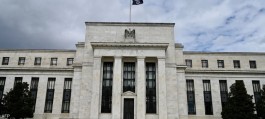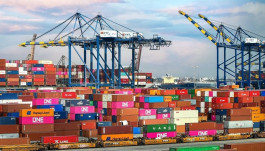Oil prices rose after the Trump administration expressed its willingness to reach an agreement with China to contain renewed trade tensions between the world's two largest oil consumers.
Brent crude rose above $63 a barrel after falling 3.8% on Friday, its largest decline since August, while West Texas Intermediate crude stabilized near $60.
Trump announced on Friday that he would impose additional 100% tariffs on Chinese goods, along with restrictions on the export of all vital software, effective November 1. This came after Beijing imposed new tariffs on US ships arriving in its ports and restrictions on the export of rare earths and other vital materials.
However, on Sunday, Trump indicated his willingness to reach an agreement, while Beijing called on Washington to negotiate and stressed that it would not hesitate to respond to any threats.
We're going to be fine with China, even though the November 1 tariff plan is still in place, the US president told reporters aboard Air Force One in the early hours of Monday morning, Asia time.
He also said he would consider supplying Ukraine with long-range Tomahawk missiles that would allow it to strike deeper into Russian territory, increasing the risk of further disruption to oil supplies from OPEC+ member states.
Technical recovery after severe losses
“The market had already priced in the worst-case scenario, so just a softer tone from Trump gives oil some breathing room,” said Haris Khurshid, chief investment officer at Chicago-based Carobar Capital.
He added, But this looks more like a correction than a real turnaround. Traders are covering their positions after last week's sharp sell-off. Unless we see real progress in trade negotiations, the gains are likely to fade quickly.
Chinese tariffs on US ships add to the mystery.
China's decision to impose tariffs on US-owned vessels arriving at its ports has led to last-minute cancellations of various types of vessels, including oil tankers, resulting in higher shipping costs.
These tariffs, which will take effect on October 14, mirror similar measures taken by Washington against Chinese vessels, as the Trump administration targets the Asian country's dominance in the global logistics and shipbuilding sectors.
These measures have added further uncertainty to the oil market outlook, which has been declining over the past two weeks as the OPEC+ alliance increased production, amid concerns about an expected supply glut later in the year. Meanwhile, a fragile truce agreement between Israel and Hamas has helped ease fears of renewed fighting in the Middle East, the source of nearly a third of the world's oil supplies.



































